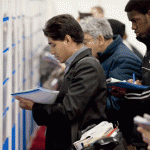 A Briefing Paper released by the Economic Policy Institute today paints a very grim picture for young adults and youth who are looking for a job. The analysis confirms what many people suspect and a lot of younger job hunters know first-hand: the jobs just aren’t there. Some of the major findings are:
A Briefing Paper released by the Economic Policy Institute today paints a very grim picture for young adults and youth who are looking for a job. The analysis confirms what many people suspect and a lot of younger job hunters know first-hand: the jobs just aren’t there. Some of the major findings are:
- The unemployment rate for 16- to 24-year-old workers averaged 18.4%, compared with 9.6% for U.S. workers overall.
- Young high school graduates have been hardest hit:
- The unemployment rate for high school graduates under age 25 who were not enrolled in school was 22.5%, compared with 9.3% for college graduates of the same age.
- Young high school graduates are not keeping pace with their older peers: Their 22.5% unemployment rate is more than double the 10.3% rate among high school graduates age 25 and older.
What makes this even more alarming is that it’s pretty common knowledge by now that the government’s official number for unemployment gets cooked in so many ways that you really can’t take it seriously. The current official joblessness count does not include workers who have “given up†and it only seem s reasonable that there is a similar segment among young job-seekers who have given up. Considering that the current overall unemployment rate is 8.8%, and the rate that includes discouraged workers and the underemployed (AKA, the U-6) stands at 15.7%, I wonder if the actual rates for young workers is actually much higher. Even the rates given in the report are not that far from (for example) the unemployment rates among young, dissatisfied Egyptians.
This is not a problem that is just going to go away. America will feel the effects of this downturn for decades in the form of lost productivity and wages. Studies show that if people graduating from high school and college don’t get off to a good start in the job market, they will experience significantly lower pay for most of their working lives. Many will never reach parity with what they ought to have. Add to this the problem that a safety net for young workers is practically non-existent, and not likely to improve in the current economic and political climate. This is the kind of situation that creates surplus frustration and rage among young people. We’ve seen what happens when it overflows. Our leaders in Washington and at the State level need to consider carefully the political implications of using the unemployed and the poor as scapegoats for the crimes of the corporate elite who brought us to this point.

